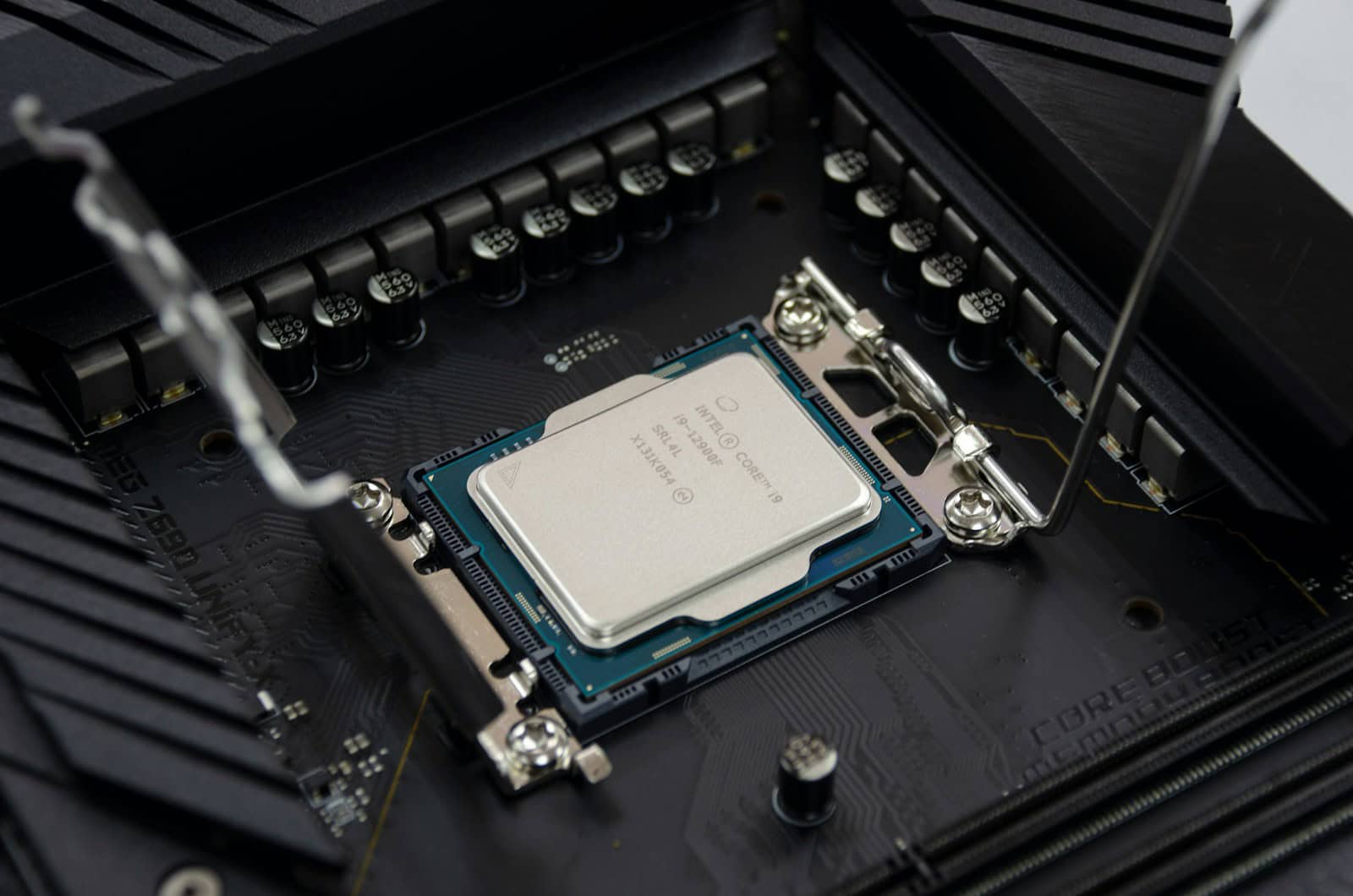Intel is preparing for another leap in desktop computing with the upcoming Nova Lake-S processors and a brand-new socket: LGA-1954. Despite just launching the LGA-1851 socket with Arrow Lake in 2024, Intel is already shifting gears, aiming to future-proof its platform with major architectural and I/O advancements.
Why LGA-1954 Matters
The LGA-1954 socket will succeed the short-lived LGA-1851 and is expected to debut in 2026 with the Nova Lake-S desktop CPU lineup. The most notable upgrade? A higher pin count—1,954 pads, compared to 1,851 on LGA-1851. This increase is not just a numbers game—it’s about accommodating the massive uptick in power delivery, memory bandwidth, and I/O required by Intel’s most ambitious chip architecture yet.

However, there’s a silver lining: LGA-1954 maintains the same physical footprint as LGA-1700 and LGA-1851—45mm x 37.5mm—which means many existing CPU coolers will remain mechanically compatible. This is great news for builders looking to upgrade without needing to invest in new cooling hardware. Still, slight changes in heat spreader design or thermal hotspots could make new mounting kits optimal for peak thermal performance.
Nova Lake-S: A Monster in the Making
Intel’s Nova Lake-S is rumored to be the most radical overhaul to its desktop architecture in years. Here’s what’s shaping up:
- Core Configuration: A hybrid design with up to 52 total cores, including:
- 16 high-performance “Coyote Cove” P-cores
- 32 efficient “Arctic Wolf” E-cores
- 4 low-power E-cores dedicated to background tasks or power-saving features
- Manufacturing Process: Intel plans to use its 14A (1.4nm-class) node for critical compute tiles, while outsourcing some chiplets—possibly the SoC or GPU modules—to TSMC’s cutting-edge 2nm process. This blend of in-house and outsourced fabrication mirrors the strategy seen in Meteor Lake and Lunar Lake, aiming to optimize performance, efficiency, and time-to-market.
- AI Acceleration Focus: Intel is expected to double down on AI with next-gen NPUs (Neural Processing Units) embedded into Nova Lake-S. These will accelerate workloads like AI-based photo editing, real-time video effects, and generative AI tools—all becoming increasingly relevant in modern consumer and creator workflows.
New Platform Features: 900 Series Chipsets
LGA-1954 will be paired with a fresh set of motherboards using Intel’s 900-series chipsets, such as the expected Z990 and H970. These boards are likely to introduce:
- DDR5-6400+ memory support
- Native Wi-Fi 7 and Bluetooth 5.4
- Thunderbolt 5 / USB4 v2.0 ports
- Enhanced PCIe 5.0 lanes for both GPUs and SSDs
While these upgrades mean a new motherboard is unavoidable, they also bring serious forward-looking capabilities that justify the generational shift.
Why the Rapid Shift From LGA-1851?
Intel traditionally sticks with a socket for at least two generations, but the quick succession to LGA-1954 may reflect broader trends:
- Growing power demands from AI and hybrid compute tasks
- Increased integration of disaggregated chiplets, requiring more pin connections
- Pressure from AMD, which is expected to debut its Zen 6 processors around the same time on a new AM5 successor with similar architectural ambitions
Simply put, LGA-1954 is being introduced not for marketing—but because Nova Lake demands it.
What This Means for Builders
If you’re on LGA-1700 or LGA-1851, you’ll need a new motherboard for Nova Lake-S. But here’s the upside:
- Cooler compatibility is retained, reducing upgrade costs.
- Performance uplift is expected to be substantial, especially in heavily threaded and AI-enhanced workloads.
- Platform longevity may return—Intel is reportedly planning to stick with LGA-1954 for multiple generations this time around.
Final Thoughts
LGA-1954 isn’t just another socket—it’s a foundational shift to support Intel’s boldest desktop architecture to date. With extreme core counts, new AI capabilities, advanced chip packaging, and modern connectivity standards, Nova Lake-S and LGA-1954 are poised to reset the bar for high-end desktop performance in 2026. If you’re building a new system now, consider your upgrade path carefully—LGA-1954 may just be worth the wait.
Key Takeaways
- The new LGA-1954 socket maintains the same 45×37.5mm dimensions as previous sockets, allowing cooler compatibility across generations.
- Intel is replacing LGA-1851 after just one generation due to power delivery requirements for Nova Lake processors.
- PC builders will need new motherboards for Nova Lake CPUs but can reuse their existing cooling solutions.
Overview and Specifications of LGA-1954
Intel’s LGA-1954 socket represents the next step in desktop CPU infrastructure, featuring 1,954 active contact lands and maintaining similar physical dimensions to its predecessors while improving power delivery capabilities.
Socket Design and Architecture
The LGA-1954 socket measures 45×37.5 mm, identical in size to both the LGA-1851 and LGA-1700 sockets. This consistent form factor brings practical benefits for system builders and manufacturers. The socket name derives from its 1,954 electrically active contact pins, which marks a notable increase from the LGA-1851 socket currently used with Arrow Lake processors.
The pin arrangement is specifically designed to support Intel’s upcoming architecture needs, particularly for power delivery. This upgrade in contact points allows the socket to handle the power requirements of future high-performance CPUs without increasing the physical footprint on motherboards.
The chipset accompanying LGA-1954 will measure approximately 24 x 25 mm, providing the I/O capabilities needed for next-generation platforms.
Compatibility With Arrow Lake-S and Future Generations
LGA-1954 is primarily designed for Intel’s upcoming Nova Lake-S processors, representing the next major architecture after Arrow Lake. The socket isn’t backward compatible with current Arrow Lake chips, which use the LGA-1851 socket.
Nova Lake processors will require new motherboards built around this socket. However, the good news for consumers is that existing CPU coolers designed for LGA-1700 and LGA-1851 sockets will likely remain compatible with LGA-1954 motherboards due to the identical physical dimensions.
This socket is expected to support multiple generations of Intel CPUs beyond Nova Lake, potentially extending its lifespan and providing better long-term value for consumers investing in the platform.
Comparison to LGA 1851 and Competing Solutions
LGA-1954 offers 103 more contact pins than LGA-1851, representing a 5.6% increase in connectivity. This additional pin count primarily addresses power delivery requirements for Intel’s increasingly complex CPU designs rather than simply adding new features.
Unlike the transition from LGA-1151v1 to LGA-1151v2, which maintained the same pin count but reorganized power delivery pins, LGA-1954 adds substantial new connection points. This suggests Nova Lake will have significantly different power architecture needs than Arrow Lake.
Compared to AMD’s competing AM5 socket with 1,718 pins, LGA-1954 offers 236 more contact points. However, pin count alone doesn’t determine performance—AMD’s design uses a different approach with the pins on the CPU rather than the motherboard socket.
The identical physical dimensions to previous sockets gives Intel a practical advantage in manufacturing and compatibility, potentially reducing costs for both motherboard makers and consumers.
Technological Impact and Competitive Landscape
Intel’s LGA-1954 socket represents a significant shift in the CPU market, bringing new capabilities and competitive dynamics. This platform introduces substantial performance improvements while requiring ecosystem adjustments across motherboards, memory, and cooling solutions.
Processor Support and Performance Capabilities
The LGA-1954 socket will support Intel’s next-generation Nova Lake-S processors, marking a complete departure from previous platforms. This new socket follows Arrow Lake and Panther Lake in Intel’s roadmap, introducing chips built on the advanced 18A process technology.
Nova Lake-S CPUs are expected to feature enhanced core designs with significant IPC improvements. Intel’s flagship Core Ultra 9 285K is rumored to offer up to 52 cores in a hybrid configuration, combining high-performance P-cores with efficiency-focused E-cores.
The performance jump should help Intel compete with AMD’s Zen 5 architecture. AMD made similar socket transitions with AM5, but Intel’s move to LGA-1954 represents a more substantial technological leap.
Benchmark projections suggest 15-20% improvements in single-threaded tasks and even larger gains in multi-threaded workloads compared to Arrow Lake.
AI Workloads and Next-Gen Computing
LGA-1954 positions Intel to better handle AI workloads with dedicated NPU (Neural Processing Unit) enhancements. The platform introduces expanded AI capabilities crucial for next-generation applications and services.
The integrated NPU performance is expected to double compared to previous generations, enabling faster on-device AI processing without relying on cloud services. This addresses growing demands for local AI computation in professional applications.
Intel’s strategy aligns with broader industry trends toward specialized AI hardware. Nova Lake-S processors will feature:
- Enhanced matrix multiplication engines
- Expanded AI instruction sets
- Larger caches optimized for neural network operations
- Improved power efficiency for sustained AI workloads
This focus aims to challenge AMD’s AI capabilities while creating new use cases for desktop computing beyond traditional productivity and gaming applications.
Motherboard and Platform Ecosystem
The transition to LGA-1954 requires an entirely new motherboard ecosystem with revised electrical and physical specifications. Manufacturers must develop new designs to accommodate the socket’s increased pin count and power delivery requirements.
The platform introduces DDR5-6400 memory support as standard, eliminating DDR4 compatibility entirely. PCIe 5.0 lanes will increase for both storage and graphics, with some models potentially offering limited PCIe 6.0 support.
Key platform improvements include:
- Enhanced power delivery (up to 380W)
- New mounting mechanisms for coolers
- Revised chipset features
- Additional M.2 slots for NVMe storage
Motherboard vendors like ASUS, MSI, and Gigabyte are developing products across various price points. The platform’s launch timing puts pressure on system builders who recently upgraded to LGA-1700 platforms, though the performance benefits are expected to justify the investment for professionals and enthusiasts.
Frequently Asked Questions
Understanding CPU socket design is crucial for system builders and tech enthusiasts. Socket compatibility determines which processors can work with specific motherboards and impacts overall system performance.
What is the significance of LGA in CPU socket design?
LGA (Land Grid Array) is a socket design where pins are located on the motherboard rather than on the CPU. This approach provides better electrical connections and allows for higher pin counts.
The design distributes pressure more evenly across the CPU, reducing the risk of bent pins during installation.
LGA sockets typically support higher power delivery, which is essential for modern high-performance processors.
Which Intel processor generations are compatible with LGA sockets?
Intel has used various LGA socket designs since 2004. The LGA 775 supported Intel’s Pentium 4, Pentium D, and early Core processors.
LGA 1151 was compatible with 6th, 7th, 8th, and 9th Gen Intel Core processors, though with different versions for different generations.
Current 12th and 13th Gen processors use LGA 1700, while the upcoming Nova Lake CPUs will require the new LGA 1954 socket.
What are the primary differences between LGA and PGA socket types?
In PGA (Pin Grid Array) designs, the pins are on the CPU itself, while in LGA, they’re on the motherboard socket. This fundamental difference affects durability and installation risk.
LGA allows for higher pin density and better power delivery capabilities compared to PGA sockets.
PGA CPUs tend to be more susceptible to damage from improper handling, as the pins can easily bend if dropped or improperly inserted.
How does the LGA socket architecture affect CPU performance and installation?
LGA sockets provide superior electrical connections, allowing for more efficient power delivery and signal integrity. This directly impacts CPU performance, especially under high loads.
The design simplifies CPU installation with alignment notches and a retention mechanism that secures the processor firmly against the socket contacts.
The flat surface of LGA processors improves thermal transfer to cooling solutions, enhancing overall heat dissipation.
What impact does the transition to LGA sockets have on motherboard compatibility?
Each new LGA socket design typically requires new motherboards with different chipsets. For instance, Intel’s move to LGA 1954 will make existing LGA 1851 motherboards incompatible with Nova Lake CPUs.
This transition forces users to upgrade both their CPU and motherboard when moving to a new processor generation.
Socket transitions usually bring new features like PCIe upgrades, improved memory support, and enhanced power delivery systems.
What advancements in Intel’s Nova Lake series necessitate changes in socket design?
Intel’s Nova Lake processors require the new LGA 1954 socket primarily due to enhanced power delivery requirements. The increased pin count (from 1851 to 1954) allows for better power routing.
The new socket design supports improved I/O capabilities, including next-generation memory interfaces and expanded PCIe lanes.
These architectural changes support Nova Lake’s enhanced performance metrics and power efficiency improvements, which couldn’t be fully realized within the constraints of previous socket designs.







